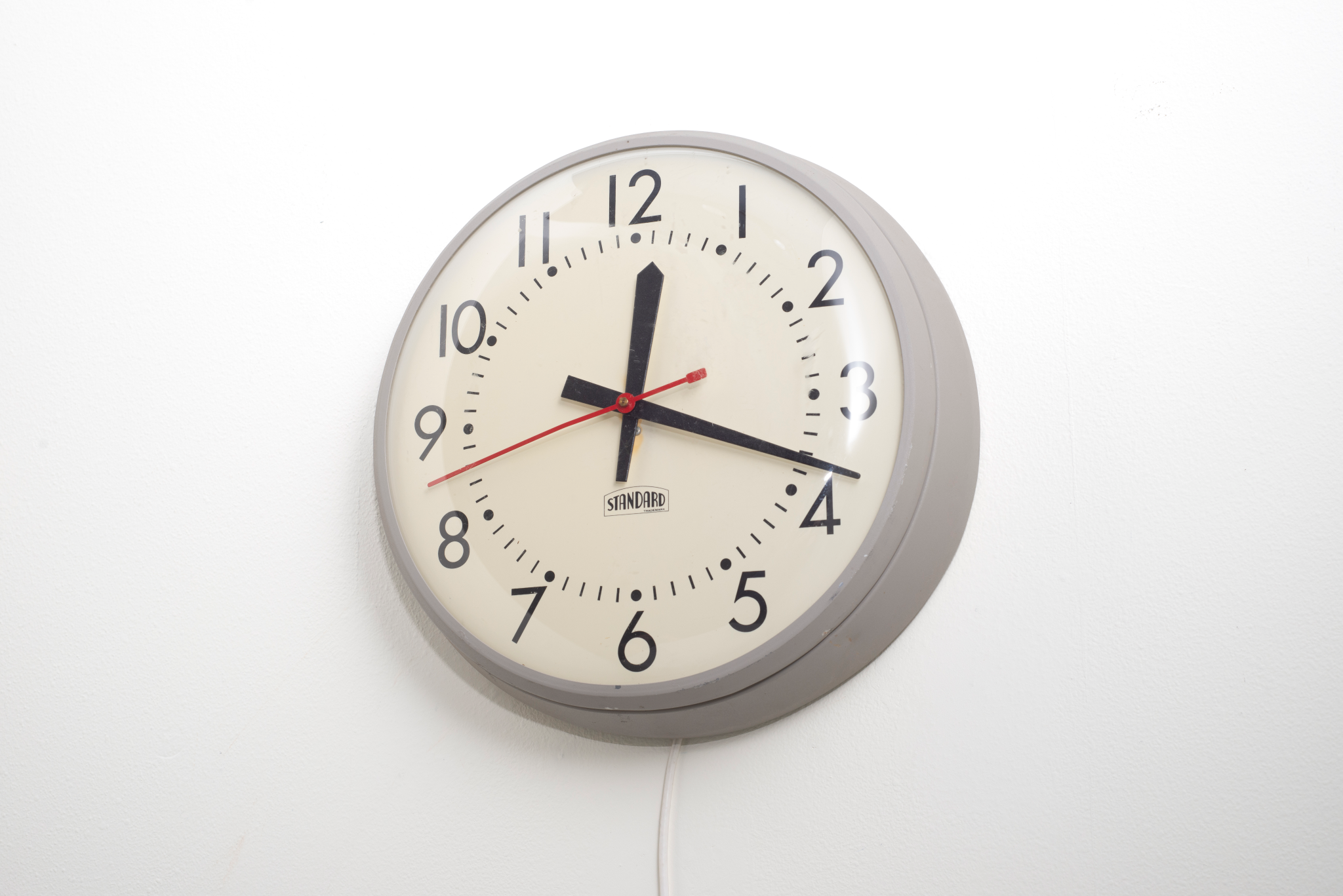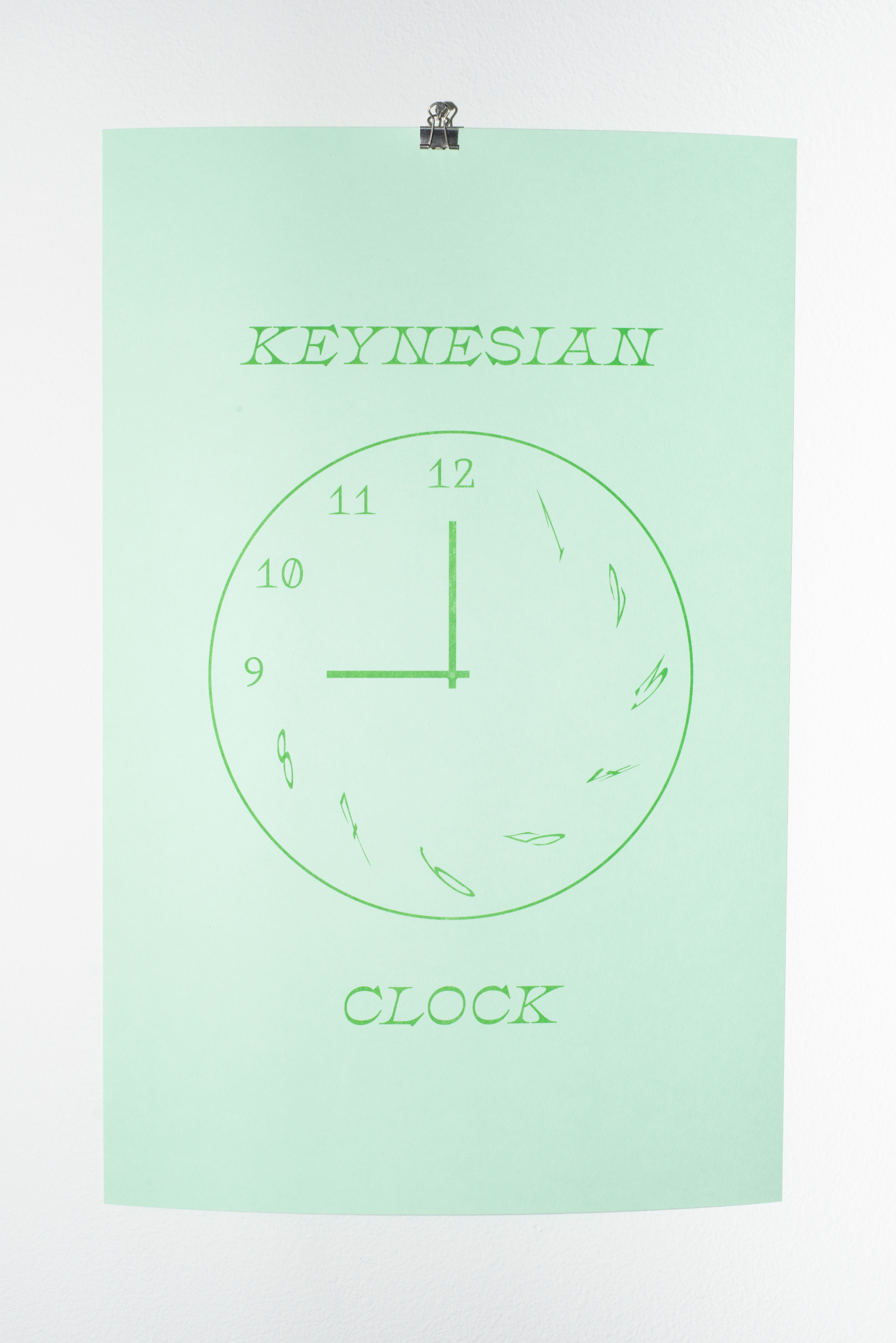Keynesian Clock
- Mediumindustrial wall clock, electronics, software
- Year2023—
- VenuesJoan Truckenbrod Gallery - Corvallis, Oregon

Concept
Close to 100 years ago, economist John Maynard Keynes predicted that by the time his grandchildren grew up, they would likely be working only 15 hours per week [1]. That future era is roughly now. In his essay titled “Economic Possibilities for our Grandchildren,” Keynes predicted that technological progress combined with economic growth would produce better living standards, reducing undesirable labor and thus free up more time for leisure activity. In the year 2023, most individuals in the Western world work just as much as they did in the 1970s [2], despite demands for a shorter working week [3]. But why? Haven’t we reached a certain threshold of wealth? Isn’t it possible that everyone could labor less and play more? What would this future look like?
Keynesian Clock is a structural intervention for the working day. It is a modified warehouse clock that asks “what would the passing of labor time feel like if Keynes was right?” The clock operates as if the 8-hour work day we’re accustomed to was scaled to just 3 hours as Keynes predicted. Each passing minute takes 22.5 seconds instead of 60, and 22.5 minutes for each hour. It asks “what would it mean to watch the clock” if work was drastically limited?

References
-
Keynes, John Maynard. “Economic possibilities for our grandchildren.” In Essays in persuasion, pp. 321-332. Palgrave Macmillan, London, 2010.
-
Charlie Giattino, Esteban Ortiz-Ospina and Max Roser (2020) - “Working Hours”. Published online at OurWorldInData.org. Retrieved from: ’https://ourworldindata.org/working-hours’ [Online Resource]
-
Stronge, Will, and Kyle Lewis. Overtime: Why We Need a Shorter Working Week. Verso Books, 2021.